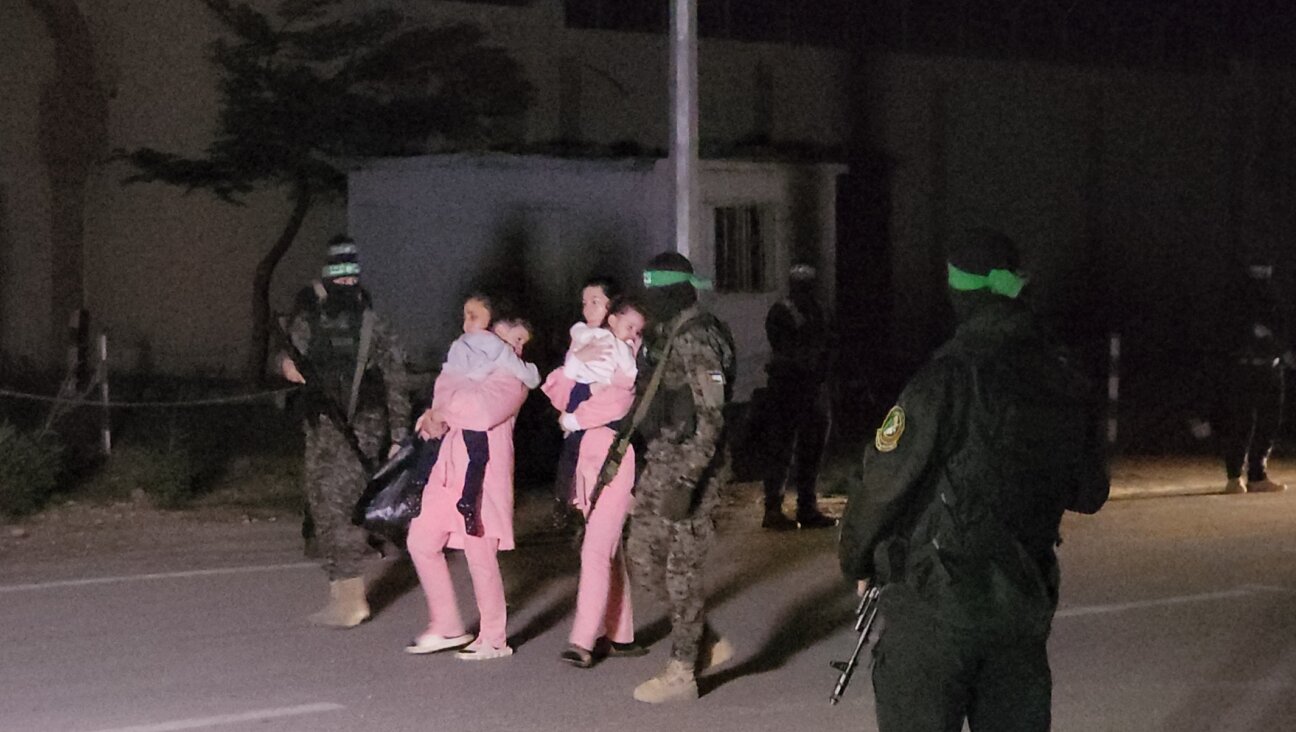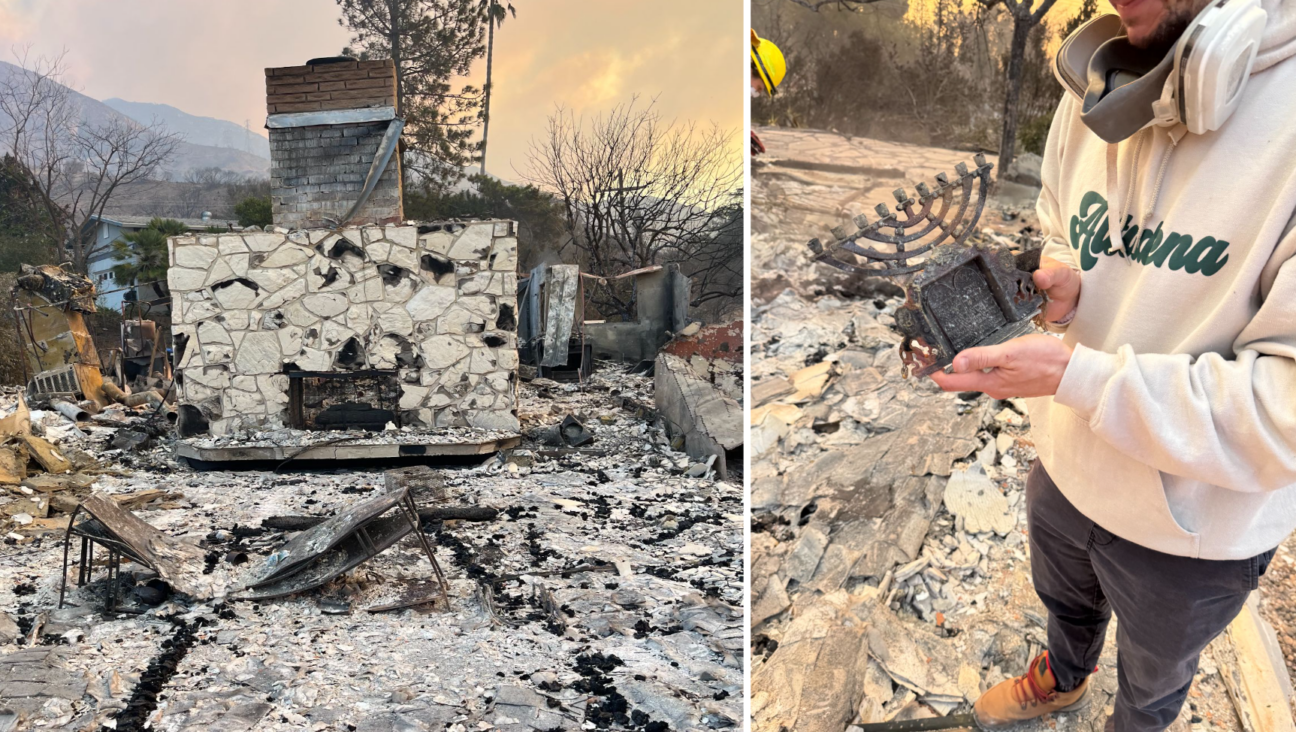War Clouds Gather Over the Golan
While the world’s attention is riveted on the conflict in Iraq and a possible American attack on Iran, Syrian dictator Bashar al-Assad may be quietly preparing for a war against Israel.
From the mid-1950s until the end of the Cold War, what made Syria’s aggression against Israel possible was the fact that Damascus got its military hardware almost for free from the Soviet Union. With the collapse of communism, this arrangement came to an end, leaving late Syrian president Hafez al-Assad with a debt of well over $10 billion. Since he did not have the money to pay, most procurement was brought to a halt.
Equipped only with the weapons they had been provided in the wake of the 1982 Israeli invasion of Lebanon, the Syrian armed forces were allowed to decay until much of their equipment was fit only for the junkyards. Now, however, the balance seems again to be tilting toward Damascus.
The first step was taken in January 2005. In an apparent effort to reassert Moscow’s power in the Middle East, Russian President Vladimir Putin forgave Damascus three quarters of its debt; the rest, it seems, has now been paid by Iran. This agreement enabled the Syrians to start rebuilding their armed forces.
Damascus began by completing the large array of surface-to-surface Scud missiles that, with North Korean help, they had been building throughout the 1990s. As a result, they now have several hundred such missiles. Some are armed with chemical warheads, and some are capable of reaching just about any target inside Israel.
Of late, the Syrians have gone on a real shopping spree. They have bought Russian-made anti-aircraft missiles, anti-tank missiles and anti-ship missiles capable of being launched either by sea or by land. The equipment in question is modern and extremely sophisticated. Some of it has yet to even enter service in Russia itself — and much of it is as good as, if not better than, anything found in the West.
Meanwhile, the Syrian High Command has also been studying the lessons of the recent war in Lebanon. From the little that has leaked out, it is possible to put together the following picture: Seen from Damascus, Israel’s strategic deterrent has proved irrelevant, and it can, provided some limits are observed, be safely ignored. During this past summer’s hostilities with Hezbollah, the only part of the Israeli military that performed credibly was the air force.
To be sure, excellent intelligence and superb command and control enabled the air force to knock out every single Hezbollah-owned surface-to-surface missile launcher either before it could come into action or immediately after it had done so. The Israelis, however, had an easy task, since their fighter-bombers were facing practically no opposition; even so, fearing casualties, they hardly dared use their helicopters. Moreover, the air force failed to stop the short-range rockets raining down on northern Israel.
The Israeli air force could wreak much destruction, but it could not force a decision.
At sea and on land, Israel did much worse. Following a successful Hezbollah missile strike that hit, but did not sink, one of Israel’s ships, the navy was forced to stay well away from the Lebanese shore. It blockaded Lebanon’s ports but was unable to do much to influence the battle.
The ground forces, both conscripts and reservists, proved heavy handed, hesitant, slow, ill trained and ill motivated. In part, they were also badly commanded; too many senior officers, instead of leading their men as they used to do, stayed behind their computers well in the rear. Overall there was precious little to show that these were the same forces that as recently as 1982 had taken just one week to reach Beirut.
Considering these demonstrated shortcomings on the Israeli side, the outline of a possible Syrian plan of attack is not hard to guess. In contrast to Syria’s launching of the Yom Kippur War in 1973, there will be no large-scale offensive action either in the air — expect, perhaps, by commando forces — or on the ground.
Instead, some incident will be generated and used as an excuse for opening rocket fire on the Golan Heights and the Galilee. Once that happens, Hezbollah will most likely be induced to join in. The United Nations forces in Lebanon will, as usual, prove to be a broken reed.
Should the Israelis respond by sending in their heavy armor, the Syrians will stay on the defensive, relying on their newly acquired anti-tank missiles to break the assault. Should the Israelis send in their air force, the Syrian anti-aircraft missile batteries will be waiting for them.
To deter the Israelis from escalating the struggle and smashing Syria’s infrastructure, as they did in Lebanon, the Syrians will rely on their missiles. The overall goal will be to draw out the conflict and inflict casualties, civilian as well as military, until Jerusalem finally throws in the towel.
To be sure, the Syrian plan is not without risk. One problem facing the Syrians is that the terrain on and east of the Golan Heights, unlike southern Lebanon, provides scope for the kind of armored maneuver warfare that, long ago, used to be Israel’s forte. Damascus, therefore, will have to start by creating a vast array of artificial obstacles capable of trapping the Israeli tanks; indeed, for some time now they have been doing just that.
Second, relying on chemical warheads to balance the Israeli air force’s ability to strike at Syria may be extremely dangerous, given both Jews’ aversion to gas and the widespread belief that Israel possesses nuclear weapons. Such, however, are the hazards of war, and experience suggests that they may be contained. Given Israel’s reluctance to take casualties and its lack of fighting spirit — as demonstrated all too clearly this past summer in Lebanon — overall the emerging Syrian plan is a good one with a reasonable chance of success.
When will the Syrians go to war? Obviously, much will depend on what happens in Iraq and Iran. A short, successful American offensive in Iran may persuade Assad that the Israelis, much of whose hardware is either American or American-derived, cannot be countered, especially in the air. Conversely, an American withdrawal from Iraq, combined with an American-Iranian stalemate in the Persian Gulf, will go a long way toward untying Assad’s hands.
In any case, the Syrian forces will need time to prepare. By a rough guess, absorbing the new weapons may take more than a year, but almost certainly less than the three or four years that some Israeli intelligence sources, seeking to reassure their own people, say are needed.
On the other hand, Damascus surely will not make the mistake of waiting until the Israeli anti-missile weapons, which are now under development, become operational and enter service. Finally, the season must be selected in such a way as to make the weather work against the Israelis as much as possible. Fog, cloud, rain and snow impede air operations and make a ground offensive difficult.
Hence, everything considered, October 2008 does not seem like a bad choice. The fact that the Americans will be busy with their elections, and that time must pass before a new administration finds its feet, could count as a bonus.
What steps can Israel take? In part, it can continue doing what it has been doing for a long time — namely, gather as much intelligence as possible on Syria’s surface-to-surface missiles and preparing to launch a devastating air strike against them if necessary. In addition, ways and means, either technical or tactical, must be found to counter the new Syrian surface-to-air and anti-tank missiles.
In that context, it might be a good idea to have Mossad buy or steal some of those missiles’ warheads. Back in the early 1970s, that is how Israel learned the secrets of the French-made Exocet sea-to-sea missile, which was then in Arab hands. Once the way that the electronics work is understood in detail, countermeasures should not be too difficult to devise.
Above all, Israel must rebuild its ground forces, where the bulk of its conscripts and reservists serve. As has happened in other advanced countries, those forces have had their morale undermined by social developments. This includes an aging population and declining fertility, both of which have made the nation less willing to take casualties. It also includes the spread of feminism, which has given women a considerably greater role in the armed forces and consequently made military service less attractive to men, while at the same time driving home the impression that Israeli troops are nothing but a bunch of sexual predators.
Furthermore, the ground forces have borne the main burden of fighting the Palestinian intifada over the past 20 years. Doing so has weakened their morale almost to the vanishing point; in some cases, crybabies have taken the place of soldiers. One is reminded of the Argentinean troops who, after years of fighting their own civilian population, ran away when confronted by a British force one-third their size in the Falklands in 1982.
Of all the problems afflicting the Israelis, this is the worst. So long as the occupation of the Palestinian territories lasts, it is anybody’s guess whether the men’s former willingness to fight and die can be restored.
Finally, Israel could try to forestall another war by reaching a peace agreement with Syria. As we now know, under Ariel Sharon secret Israeli-Syrian talks went on for two years.
No sooner had last summer’s hostilities in Lebanon ended — a war that was probably launched by Hezbollah without any consultation with Damascus — then leading Syrian personalities started saying they were interested in resuming negotiations and bringing them to a conclusion. But in the fall, Israel went out of its way to reject Syria’s overtures, partly because it wanted Damascus to stop assisting Hezbollah and the Palestinians and partly owing to American pressure.
Now, however, the Americans themselves are about to talk to Damascus, as well as to Tehran. Where the master leads, the follower cannot be far away — or else, Israel had better be prepared to take on the consequences.
Martin van Creveld, a professor of military history at the Hebrew University of Jerusalem, is the author of the forthcoming “The Changing Face of War: Lessons of Combat, From the Marne to Iraq” (Presidio Press).
A message from our Publisher & CEO Rachel Fishman Feddersen

I hope you appreciated this article. Before you go, I’d like to ask you to please support the Forward’s award-winning, nonprofit journalism so that we can be prepared for whatever news 2025 brings.
At a time when other newsrooms are closing or cutting back, the Forward has removed its paywall and invested additional resources to report on the ground from Israel and around the U.S. on the impact of the war, rising antisemitism and polarized discourse.
Readers like you make it all possible. Support our work by becoming a Forward Member and connect with our journalism and your community.
— Rachel Fishman Feddersen, Publisher and CEO























